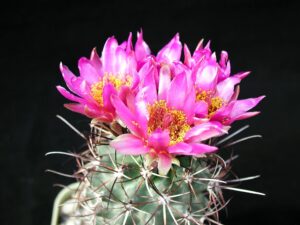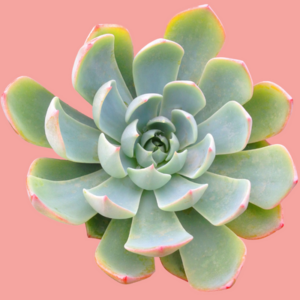Understanding the care required for cacti goes beyond simple observation. Many enthusiasts are captivated by the resilience of these remarkable plants, often thriving in the most inhospitable environments. Watering is one of the most critical aspects of cactus care, and maintaining a proper schedule can mean the difference between a flourishing cactus and a wilting one. This exploration delves into the nuance of watering cacti, offering insights that will enhance your appreciation and expertise.
Before diving into the specifics of watering schedules, it’s essential to acknowledge the inherent adaptations of cacti. These plants have evolved to survive in arid conditions, developing unique physiological features that enable them to store water and endure drought. Their thick, fleshy stems serve as reservoirs, while their spines minimize transpiration, allowing them to thrive in environments where moisture is a precious commodity.
While the cactus may appear easy to care for, understanding its watering needs requires an observant eye and a willingness to adapt. Factors like the specific genus, environmental conditions, and the season all influence how often these plants should be watered. This article will guide you through the optimal watering schedule, ensuring your cactus remains vibrant and healthy.
Decoding the Ideal Watering Frequency
The primary determinant of how often to water your cactus hinges on the environmental conditions in which it exists. For instance, cacti in arid regions have adapted to receive minimal moisture, whereas those in slightly more humid environments might necessitate more frequent watering. Temperature, humidity, light exposure, and the growth stage of the plant all play pivotal roles in establishing the correct hydration rhythm.
Typically, during the active growing season—which spans from spring to early fall—cacti require more frequent watering, as this is when they are metabolically active, establishing roots and growing new stems. On average, a good rule of thumb is to water every 2 to 3 weeks during the warm months, ensuring the soil dries out completely between waterings. This period of thorough drying is essential, as it encourages a robust root system and helps prevent root rot.
As temperatures plummet in the fall and winter months, the watering needs diminish immensely. Cacti enter a state of dormancy, where their metabolic processes slow dramatically. During this phase, watering should be reduced to once every month or even less, depending on the humidity and warmth of the environment. Monitoring soil moisture is crucial during this time; if the soil remains damp for extended periods, it indicates that the cactus may not need additional water.
Not All Soil is Created Equal
The type of soil used for cacti also significantly influences watering practices. A well-draining potting mixture is imperative for cactus health. Standard garden soil retains too much moisture, which can lead to root rot—one of the primary threats to a cactus’s wellbeing.
The optimal soil for cacti consists of a blend of potting soil, sand, and perlite. This combination ensures that excess water drains away quickly while still retaining enough moisture to benefit the plant. When planting your cactus, ensure the container also has adequate drainage holes, allowing for quick evacuation of excess water.
A common misstep is to follow a rigid watering schedule without considering the actual moisture content of the soil. Using a moisture meter can provide a clear indication of when your cactus truly requires water. These simple devices are invaluable for both novice and seasoned gardeners, helping to cultivate a more intimate understanding of the plant’s needs.
Observation: The Key to Cactus Care
Every cactus has its personality, and keen observation can unveil its specific preferences. Some varieties, such as the saguaro, can withstand extended periods without water, while others, such as the Easter cactus, may require more frequent hydration. Therefore, fostering an observational mindset helps in tailoring care to suit the unique nuances of each species.
Look for signs that may indicate when to water: a cactus that appears slightly shriveled may be signaling for hydration, whereas a soft or mushy exterior often suggests overwatering. Likewise, vibrant coloration and firm texture are indicators of a healthy, well-hydrated plant.
In addition to moisture, light exposure is paramount for a cactus’s overall health. Positioning your cactus in an area that receives ample sunlight helps to maintain its vigor and encourages the photosynthetic processes essential for growth. Yet, ensure the light is not overly intense—especially during scorching summers—to avoid sunburn on the cactus’s skin.
Beyond Watering: Comprehensive Care Strategies
Watering is merely one aspect of cactus care. Fertilization, appropriate pot sizes, and seasonal considerations are also fundamental to promoting optimal growth. During the growing season, applying a diluted cactus fertilizer can provide essential nutrients, enhancing health and vitality.
Furthermore, pot size is another critical consideration. A pot that is too large can hold excessive moisture, increasing the risk of rot, while one that is too small may restrict growth. A comfortable balance enables the cactus to thrive without the threat of over-saturation.
In conclusion, understanding how often to water a cactus involves consideration of various factors, including species, environmental conditions, and individual plant characteristics. By cultivating a deep and respectful relationship with your cactus, you will not only provide better care but also strengthen your bond with this extraordinary life form. With appropriate watering schedules and observational skills, you can transform your cactus care into an enriching experience that fosters both growth and admiration for these resilient plants.





Leave a Comment